
Options are provided for I DO, WE DO and YOU DO for this very well-planned Grade 7/8 project.
- Subject:
- English Language Arts
- Indigenous Perspectives
- Social Studies
- Treaty Education
- Material Type:
- Activity/Lab
- Unit of Study
- Date Added:
- 11/21/2019

Options are provided for I DO, WE DO and YOU DO for this very well-planned Grade 7/8 project.
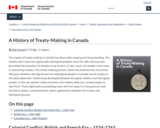
The impact of treaty making in Canada has been wide-ranging and long standing. The treaties the Crown has signed with Aboriginal peoples since the 18th century have permitted the evolution of Canada as we know it. In fact, much of Canada's land mass is covered by treaties. This treaty-making process, which has evolved over more than 300 years between Aboriginal and non-Aboriginal people in Canada, has its origins in the early diplomatic relationship developed between European settlers and Aboriginal people. As the two parties made economic and military alliances, Canada began to take form. These diplomatic proceedings were the first steps in a long process that has led to today's comprehensive claims agreements between the Crown and Aboriginal groups.

An excellent collection of FNME Resources from Alberta Education.
This includes:
*Online print resources
*Curriculum resources
*Professional learning resources
*First steps for professional development

The Children’s Health and Well-being Measure (ACHWM) is a tool that gives Indigenous communities and organizations an overview of the health and well-being of children and youth in their communities.
The measure offers insight into children's Spiritual, Emotional, Physical, and Mental wellness.
The survey is completed on a tablet that engages children and acts as a catalyst for honest conversation. The results are shared with each child or youth in a visual form on the Balance Chart.
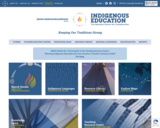
The National Centre for Collaboration in Indigenous Education connects communities with each other to share their stories about Indigenous education across Canada and around the world.
Playlists of short films are available.

This site includes the following: (plus other information pertaining to Aboriginal Education in Manitoba and Canada)
It's Our Time: First Nations Education Tool Kit Teacher's Guide (National and Manitoba)
Creating Racism-Free Schools through Critical/Courageous Conversations on Race
Critical/Courageous Conversations on Race: What your child is learning at school and how you can help
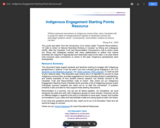
This document helps support students and teachers wishing to engage with Indigenous perspectives in science. It also covers why it is important to connect to local Indigenous communities, provides suggestions on how to develop student understanding, and shares examples of how student science research can directly connect to the
Canadian Truth and Reconciliation Calls to Action.
Also check out the Indigenous Engagement Starting Points Checklist which provides a list of Indigenous groups and/or individuals you/your students can reach out to, to start this connection. A question checklist is also provided to help support those starting discussions.

This is a well-organized site that is easy to navigate and is available in both English and French.
There is much information on this site and I would encourage you to explore and read this resource online.
Topics include:
Truth & Reconciliation
First Nations
Inuit
Metis
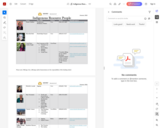
Find speakers to come to your classroom in person or virtually, based on their specialty.
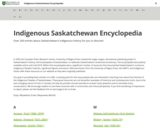
Indigenous Saskatchewan Encyclopedia
Over 200 entries about Saskatchewan's Indigenous history for you to discover

The Indigenous Voices and Reconciliation learning channel aims to engage learners in discussions about Canada’s colonial history and its impact on Indigenous communities. Explore our collection of films by distinguished Indigenous filmmakers, creators, and allies.

NFB educational playlists are selections of films on themes that tie in with Canadian curricula and address the important issues of the day. Many of the playlists are also linked to our study guides.

Indigenous and Northern Affairs Canada (INAC) continues to renew the nation-to-nation, Inuit-Crown, government-to-government relationship between Canada and First Nations, Inuit and Métis; modernize Government of Canada structures to enable Indigenous peoples to build capacity and support their vision of self-determination; and lead the Government of Canada's work in the North.

This YouTube channel offers many videos with Indigenous content.
Please subscribe for more INAC videos: http://goo.gl/esyayp
Get more INAC: http://www.aadnc-aandc.gc.ca/
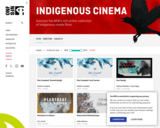
Discover the NFB’s rich online collection of Indigenous-made films.
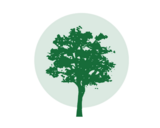
Inspiring Success: First Nations and Métis PreK-12 Education Policy Framework was renewed in collaboration among First Nations and Métis organizations, Elders and Traditional Knowledge Keepers, post-secondary and provincial Prekindergarten to Grade 12 education stakeholders, and the Ministry of Education. The vision of Inspiring Success is a provincial Prekindergarten to Grade 12 education system that foundationally places Indigenous knowledge systems, cultures and languages within the structures, policies and curricula to ensure an equitable and inclusive system that benefits all learners. As such, this renewed policy framework guides actions at all levels of the education sector and is aligned with the goals of the Education Sector Strategic Plan. Inspiring Success supports reconciliation, treaty education, Indigenous cultures and languages in the classroom, as well as the infusion of Indigenous perspectives and ways of knowing into all renewed curricula to benefit all learners.
The ministry is committed to facilitate the sharing of information, tools and processes useful to school divisions, teachers and administrators in planning and implementing actions in First Nations and Métis education, in alignment with the policy goals. Improving First Nations, Métis and Inuit student achievement and the learning outcomes for all students is a shared responsibility throughout the PreK-12 education sector.
As a first step, it is recommended to become familiar with the policy framework.
Implementation
We heard from First Nations and Métis organizations, Elders, provincial education stakeholders and post-secondary institutions about how crucial implementation will be for this policy framework. We acknowledge the considerable number of initiatives and programs put in place by government and by school divisions; however, there is more work to do. A variety of tools and resources are available to assist with creating awareness, building support, planning and implementation, including a webinar presentation, PowerPoint slideshow, promotional handout and dialogue questions. Many links are provided within each goal area as suggested resources for teachers and administrators. More will be added as new information and tools become available.

This video provides and introduction to the Four Seasons of Reconciliation program.
"4 Seasons of Reconciliation is a unique 3-hour online course that promotes a renewed relationship between Indigenous Peoples and Canadians through transformative learning about truth and reconciliation."
Sun West Teachers - to register for the course email dlchelp@sunwestsd.ca

Find activities, games and stories for youth and educators about Indigenous peoples' culture, history and languages.

The Learning Circle is designed to help meet Canadian educators' growing need for elementary-level learning exercises on First Nations. It is the third in a series of four classroom guides on First Nations in Canada.
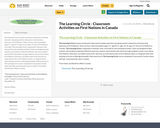
The Learning Circle has been produced to help meet Canadian educator's growing need for elementary-level learning exercises on First Nations. There are four classroom guides (ages 4-7, ages 8-11, ages 12-14, ages 14-16) on First Nations in Canada. The Learning Circle is organized in thematic units. each with its own teaching activities. Units are designed to give teachers and students simple but effective exercises, projects and activities that will encourage students to learn more about First Nations. Educators can follow some of the exercises as stand-alone units on First Nations topics, or integrate them with existing curricula on Aboriginal peoples. Most exercises in The Learning Circle can be completed in one period. Certain others will take several periods, days or weeks.
From Indian and Northern Affairs Canada.